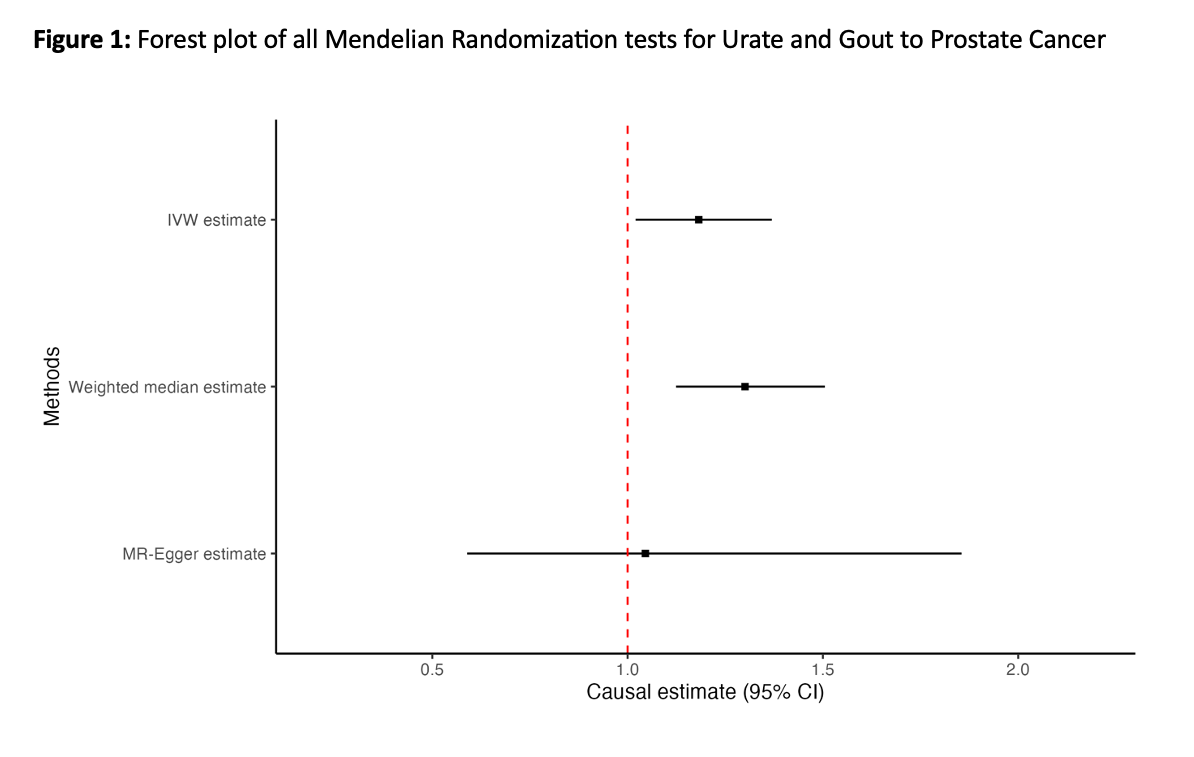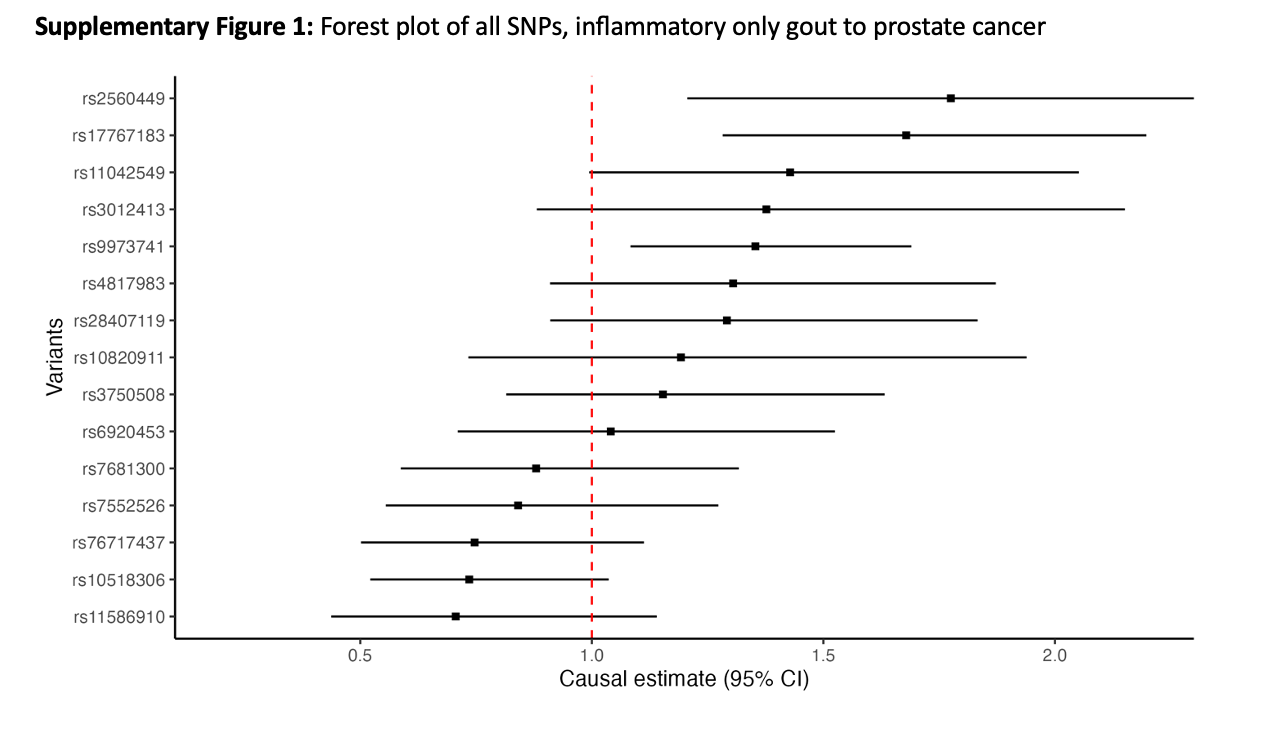Session Information
Session Type: Poster Session B
Session Time: 10:30AM-12:30PM
Background/Purpose: Gout and serum urate (SU) are associated with prostate cancer risk. Previous Mendelian randomization (MR) studies have shown mixed results on the causal relationship between urate and prostate cancer risk (1,2,3). These studies included women in their genome-wide association studies (GWAS), potentially skewing any results, and creating a need for follow-up studies. Therefore, we aimed to conduct a two-sample MR study including only men to assess causal relationships between serum urate (SU) and gout, and prostate cancer.
Methods: To generate exposure instrumental variables (i.e. sets of SNPs associated with urate and gout), we used GWAS for SU and gout (4) and used publicly available meta-analyses GWAS for prostate cancer (5). For an instrumental variable representing the inflammatory aspect of gout we used a set of 15 single nucleotide polymorphisms (SNPs) associated with gout but not urate. For an instrumental variable representing urate levels we used 4 SNPs from loci containing urate transporter genes. MR methods included inverse-variance-weighted MR, MR-Egger regression, and weighted median to test for causal relationships and horizontal pleiotropy. Horizontal pleiotropy occurs when a variant has an effect on the outcome disease outside of its effect on the exposure trait.
Results: The instrumental variable comprising SNPs associated with gout but not urate showed a causal effect of gout on prostate cancer (IVW: 1.18, P = 0.026; weighted median: 1.30, P < 0.001). We found no evidence of horizontal pleiotropy from the MR-Egger test for either the urate or gout instrumental variables (urate transporter: 0.015, P = 0.407; inflammatory-only gout: 0.005, P = 0.663). Loci contributing most strongly to this causal effect included genes encoding zinc transporter SLC30A5, and IL-1 receptor and IL-1 receptor antagonist – all of which have been previously implicated in prostate cancer.
Conclusion: MR analysis in a European male population found a causal effect between the inflammatory aspect of gout and prostate cancer. The SNPs showed evidence that the IL-1 pathway is implicated in the pathogenesis of prostate cancer. There is accumulating evidence that the prostate produces urate, and 47.5% of adult men have evidence of monosodium urate crystals in their prostate (6). This evidence supports that inflammatory pathways associated with gout may increase the risk of prostate cancer.
References:
1. Alcaraz, et al. Eur Urol. 2009;55(4):864-73.
2. Deng, et al. Eur J Nutr. 2023;62(3):1323-9.
3. Jiang, et al. Front Genet. 2021;12:608311.
4. Major, et al. medRxiv. 2022:2022.11.26.22281768.
5. Wang, et al. Nature Genetics. 2023;55(12):2065-74.
6. Park, et al. PLOS ONE. 2018;13(12):e0209049.
To cite this abstract in AMA style:
Chandrupatla S, Sumpter N, Merriman T, Singh J. Association Between Serum Urate, Gout, and Prostatic Cancer in European Male Populations: A Mendelian Randomization Study [abstract]. Arthritis Rheumatol. 2024; 76 (suppl 9). https://acrabstracts.org/abstract/association-between-serum-urate-gout-and-prostatic-cancer-in-european-male-populations-a-mendelian-randomization-study/. Accessed .« Back to ACR Convergence 2024
ACR Meeting Abstracts - https://acrabstracts.org/abstract/association-between-serum-urate-gout-and-prostatic-cancer-in-european-male-populations-a-mendelian-randomization-study/


